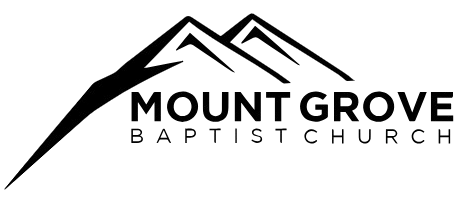The B2B SaaS landscape is in a perpetual state of evolution. What worked effectively last year might be less impactful today, and certainly by 2025 and beyond. As technology advances, buyer behavior shifts, and competition intensifies, B2B SaaS companies must continuously adapt and innovate their digital marketing strategies to not just survive, but to accelerate growth.
For SaaS businesses, digital marketing isn’t merely about lead generation; it’s about building authority, fostering trust, educating complex buyers, and creating a scalable engine for predictable revenue. The strategies you deploy today will define your market position tomorrow.
This comprehensive guide will explore the top digital marketing strategies that B2B SaaS companies should prioritize in 2025 and beyond to unlock their full growth potential and achieve sustainable success.
The Evolving B2B SaaS Buyer Landscape
Before diving into strategies, it’s crucial to understand the modern B2B SaaS buyer:
- Self-Educated: Buyers conduct extensive research online before engaging with sales.
- Value-Driven: They seek solutions to specific business problems, not just features.
- Multi-Stakeholder Decisions: Purchases involve multiple individuals across different departments.
- Personalization Expected: Generic messaging falls flat; tailored experiences are preferred.
- AI-Influenced: AI tools are increasingly impacting search, content discovery, and even internal decision-making processes.
These shifts necessitate a more sophisticated, integrated, and customer-centric approach to digital marketing.

Top Digital Marketing Strategies for B2B SaaS Growth (2025 & Beyond)
1. Hyper-Personalized Account-Based Marketing (ABM)
As generic outreach loses efficacy, ABM remains critical, evolving with advanced AI and data.
- Leverage AI for Account Prioritization: Use AI tools to identify high-value target accounts with the highest propensity to buy, based on firmographics, technographics, and behavioral signals.
- Dynamic Content Delivery: Serve highly personalized content (website, ads, emails) that speaks directly to the specific challenges and roles within each target account.
- Multi-Channel Orchestration: Coordinate touchpoints across email, LinkedIn, display ads, and even direct mail, ensuring a cohesive and personalized experience for each account.
- Sales-Marketing Alignment: ABM absolutely requires tight collaboration between sales and marketing to ensure consistent messaging and follow-up.
2. AI-Powered Content Strategy & Optimization
Content remains king, but AI is revolutionizing its creation and optimization.
- AI for Content Ideation & Research: Use AI tools to identify trending topics, answer common customer questions, analyze competitor content gaps, and generate outlines.
- AI-Assisted Content Creation: While human creativity is essential, AI can help with drafting initial versions, optimizing for SEO, improving readability, and generating variants for A/B testing.
- Content Personalization at Scale: Deliver specific content pieces to users based on their Browse behavior, industry, and stage in the buyer’s journey using AI-driven recommendation engines.
- Voice Search Optimization: As voice interfaces grow, optimize content for conversational queries.
3. Data-Driven SEO & SERP Feature Dominance
Beyond traditional organic rankings, focus on dominating the Search Engine Results Page (SERP).
- Intent-Based SEO: Prioritize keywords that reflect clear buyer intent (e.g., “best CRM for small business,” “SaaS onboarding checklist”).
- Structured Data & Schema Markup: Implement schema markup to help search engines understand your content better and qualify for rich snippets, featured snippets, and knowledge panels.
- Video SEO: Optimize video content (YouTube, embedded videos) as video increasingly dominates SERP features for B2B queries.
- E-A-T (Expertise, Authoritativeness, Trustworthiness): Build your brand’s E-A-T through author profiles, industry citations, and high-quality, research-backed content, especially crucial as AI influences search results.
4. Product-Led Growth (PLG) Marketing Integration
For many SaaS companies, the product itself is the primary marketing channel.
- Freemium/Free Trial Optimization: Design compelling self-serve onboarding flows that showcase immediate value without sales intervention.
- In-App Messaging: Use targeted messages within the product to guide users to key features, offer upgrades, or gather feedback.
- User-Generated Content (UGC): Encourage product reviews, testimonials, and case studies from happy users.
- Seamless Conversion Paths: Ensure easy paths from free user to paying customer, minimizing friction.
- Partnership with Product Team: Close collaboration between marketing and product development is essential to ensure the product experience itself drives adoption and growth.
5. Amplified Video Marketing Across the Funnel
Video is no longer just for brand awareness; it’s a powerful tool throughout the B2B SaaS buyer’s journey.
- Explainer Videos: Simplify complex SaaS solutions.
- Product Demos: Offer personalized or on-demand demos showcasing specific use cases.
- Customer Testimonials: Authentic video testimonials build immense trust.
- Webinars & Livestreams: Host thought leadership discussions and Q&A sessions.
- Short-Form Video (LinkedIn, YouTube Shorts): Capture attention with quick tips, feature highlights, and behind-the-scenes content.
- Sales Enablement Videos: Create custom videos for specific prospects to address their pain points or answer questions.
6. Building Community & Thought Leadership
In a crowded market, trust and relationships are key differentiators.
- Online Communities: Foster thriving communities (e.g., Slack groups, dedicated forums, LinkedIn Groups) where users can connect, share best practices, and get support.
- Expert Webinars & Podcasts: Position your team as industry thought leaders by hosting regular webinars, participating in podcasts, or even launching your own.
- Data-Driven Research Reports: Publish original research that provides unique insights into your industry, establishing your authority.
- Live Events (Virtual/Hybrid): Host exclusive events, workshops, or roundtables for high-value prospects and customers.
7. Revamped Sales Enablement & Marketing-Sales Alignment
As buying becomes more complex, sales and marketing must act as a single, unified revenue team.
- Dynamic Sales Playbooks: Provide sales reps with easily accessible, personalized content, scripts, and competitive insights via sales enablement platforms.
- AI-Powered Sales Coaching: Utilize AI tools to analyze sales calls, provide feedback, and identify successful conversation patterns.
- Shared KPIs: Align sales and marketing on common metrics (e.g., pipeline generated, win rates, CAC) to ensure shared accountability for revenue growth.
- Joint GTM Strategy: Marketing should be deeply involved in product launches and Go-To-Market strategies, equipping sales with what they need from day one.
8. Enhanced Data Analytics & AI for ROI Measurement
Moving beyond vanity metrics, focus on tangible business outcomes.
- Unified Data Dashboards: Integrate data from all marketing channels, CRM, and product usage to get a holistic view of the customer journey and campaign performance.
- Attribution Modeling: Implement advanced attribution models (e.g., multi-touch, time decay) to accurately understand which marketing touchpoints contribute to conversions.
- Predictive Analytics: Use AI to forecast future trends, identify at-risk customers, and predict which leads are most likely to convert.
- Experimentation Culture: Continuously test and optimize campaigns based on data insights, embracing an agile marketing approach.
